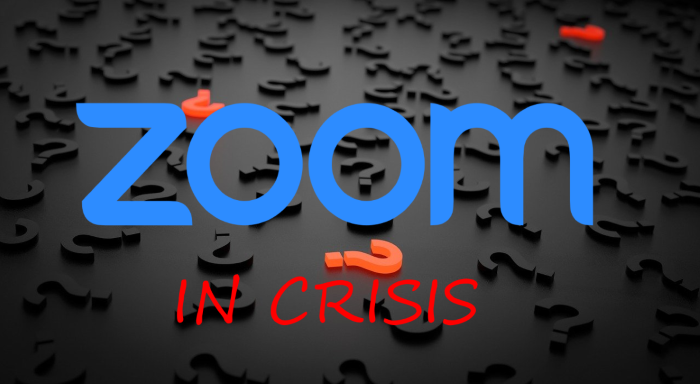
The video conference company Zoom has skyrocketed to new heights and plummeted to new lows in the past few weeks. It is one of the handful of communications applications that is perfectly suited to a world beset by quarantine actions, yet has fallen far from grace because of poor security, privacy, and transparency. Governments, major companies, and throngs of users have either publicly criticized or completely abandoned the product. In a time of unimaginable potential growth, Zoom is sputtering to stay relevant, fend off competition, and emerge intact.
Avoiding Total Loss of Product Confidence
There are lessons to be learned, applicable to all product and service companies, to avoid such gruesome misfortune. Leadership of every organization should be taking an introspective look to understand how they can best prevent such missteps and determine how they might respond in times of such crisis.
Zoom is a teleconference platform that has proven to be scalable and effective at bringing groups together to collaborate remotely. It is in a competitive field where features, time-to-market, performance, and usability are crucial to success. This is true for so many products, services, and businesses. Often in such environments, management possesses a razor-sharp focus being competitive which means getting products and new features out to the market as fast as possible.
There are costs to such a narrow focus. Accuracy in marketing messages can be overlooked. Documentation quality is often sacrificed. More importantly, it is very common that security is also deprioritized as an acceptable tradeoff. This is where the shortsightedness begins.
Security is a foundation for trust. What is easily seen as a distraction by engineers and executives during the frantic development cycles, that can be addressed ‘later’, will introduce fundamental weakness that compound over time which can be exploited.
This is where Zoom is at. The organization is feeling the pain and chaos of decisions made far earlier, during product development, that are now emerging due to the rapid growth and adoption of their solution.
A number of issues have arisen that have customers, governments, and stockholders questioning the leadership and confidence in the product. There was a privacy issue that harvested user data and sent it to Facebook without consent. Default designs that allowed incidents of harassment, called “Zoombombing”, to the embarrassment and fury of users. The inaccuracy of marketing claims of End-to-End (E2E) security and an inaccurate privacy policy. The architecture design and code that has many vulnerabilities and that does not protect E2E the privacy of sessions between parties. Then there was the choice to use data center assets in China where they stored sensitive information but did not inform customers who are very uncomfortable to such configurations. Now Zoom faces grave and very public concerns regarding the trust in management’s commitment for secure products, the respect for user privacy, the honesty of its marketing, and the design decisions that preserve a positive user experience.
Learning from Failures
The lesson is straightforward. All the issues Zoom is facing could and should have been addressed earlier, well before they have exploded in spectacular fashion. This is the key takeaway for everyone: a lack of investment for security and privacy in the development phases can manifest into devastating consequences. Every organization should be evaluating their DevOps security programs. They should be re-evaluating the role and value of security during product design, development, updates, and sustaining operations. Zoom is showcasing the severe consequences of ignoring proper risk management. They aren’t the first, but the world is changing and peoples’ tolerance and patience for such issues is evolving to be less forgiving. Zoom and every other product company must adapt to meet the growing expectations for security, privacy, and safety.
How can Zoom recover?
For those interested in how Zoom should be addressing the systemic issues they face during their product crisis, I recommend the Zoom in crisis: How to respond and manage product security incidents article on HelpNetSecurity, where I break down a number of issues and steps for resolution.








Quantum Advantage is About the Algorithm, not the Computer